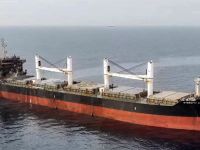Through integration with petroleum technologies and the use of a multi-disciplinary methodology, multi-component seismic data is gaining recognition as a useful tool for reservoir characterization.
Traditional seismic surveying techniques use a hydrophone (marine) or geophone (land) to measure the emerging seismic wave field.Geophones measure the directional displacement of the ground and can thus be used to examine the total vector wave field via three orientations of geophones - two orthogonal horizontal and one vertical (3C).
Recent developments have seen the move of 3C technology to the marine environment and the incorporation of the hydrophone at the seabed to obtain "4C" vector wave field recording. This methodology allows detection of both P and S waves and hence converted mode energy (P to S conversion at major rock boundaries).
The next milestone is the use of time- lapse (4D) multi-component seismic surveys to dynamically characterize the reservoir as hydrocarbon production proceeds.
Additional information:
Recording the total vector wave field of the seismic reveals more about the rock and fluid properties of a reservoir than can be known by recording P waves alone.
Lithology and porosity information can be obtained by comparing the transit time of the P and S wave components and, as shear waves are insensitive to pore fill, fluid contacts and distribution can be mapped.
Stress orientation and relative magnitude are directly related to azimuthally anisotropy and can be detected from the orthogonal sampling of the wave field.
The combination of P and S is a way to transform the seismic wave propagation into reservoir parameters.
The addition of time-lapse seismic to the acquisition programme allows monitoring of the changes in these reservoir parameters during hydrocarbon production.
Processing challenge:
The difficulties in obtaining reliable velocity, mute and static solutions for the S wave and converted wave are well known in the land situation. Even though the static problem is less severe for seabed conditions (no weathered zone), it is still a challenge.
The high-quality and relatively noise-free data produced by multi-component data acquisition with planted seabed nodes is beneficial for the state-of-the-art processing required.
This must take into account the classic asymmetry of the ray path for converted waves and employ the appropriate imaging algorithm for prestack time or depth migration.
Unequal stress and/or the presence of vertically oriented fractures, creates azimuthally anisotropy which, combined with thin layering (vertical transverse isotropy), generates typical orthorhombic media situations.
These cause the splitting of a polarized S wave into two orthogonal parts traveling at different velocities: the fast S1 propagating in the direction of the fracture or stress and the slow S2 in the orthogonal direction .
The resulting two leg operator affects the apparent frequency and resolution. By rotating the data so as to maximize the energy in the direction of the natural anisotropy axes, accurate S1 and S2 volumes are produced.
Further enhancement can be obtained by taking account of the anisotropy layer by layer (layer stripping). CGG has now pushed the processing limit one step further by being able to compensate for the an isotropic effect layer by layer with a final product free of anisotropy and of a higher resolution.
Enhanced interpretation and analysis:
Lithology, porosity, saturation and stress state are the principal factors which control Poisson's ratio. The evaluation of this attribute during the development of the hydrocarbon-bearing reservoir provides information about the saturation and the stress situation.
Characterized and calibrated at the well in a multi-disciplinary approach, the reservoir parameters can then be deterministically extended by mapping this attribute or its equivalent, the VS/VP ratio, derived from the multi-component data .
The parameter Gamma (g=Vs/Vp) is obtained by an instantaneous process corresponding to an elastic correlation between P and S (or converted wave) data which has been optimized in making use of the azimuthally anisotropy.
This allows the separation of the bulk rock property changes due to the fluid variations from the bulk rock property changes due to effective stress variations, giving the possibility of extracting useful permeability information from the seismic data.
Bypassed reservoir zones can be detected by differencing the VS/VP ratio (also attenuation ratio), which could be obtained from time-lapse multi-component seismic surveys.
How small a variation in hydrocarbon volume would it be possible to detect?
This is becoming the quest of repeated surface and down hole multi-component geophysics as a contributor to dynamic reservoir characterization.
Source:CGG.Source
by Claude Vuillermoz, Chief Geophysicist
© 2000 Mena Report (www.menareport.com)







